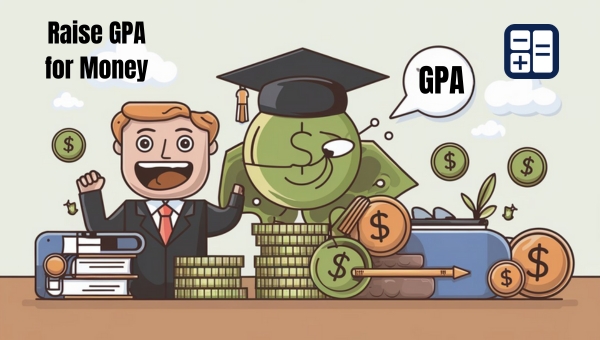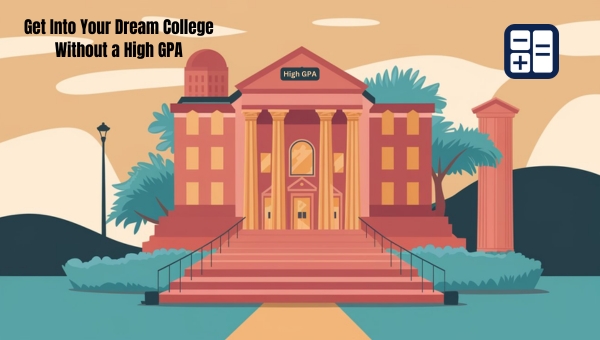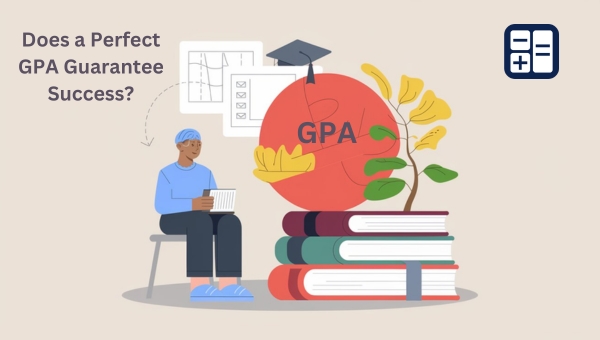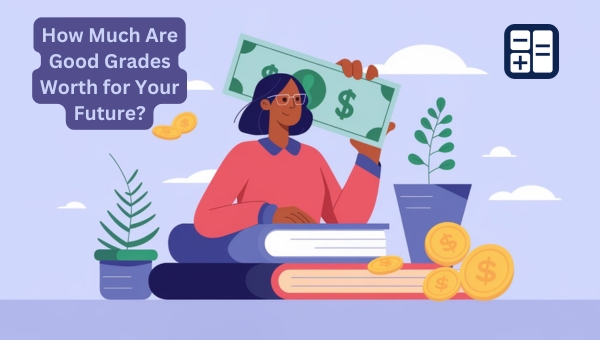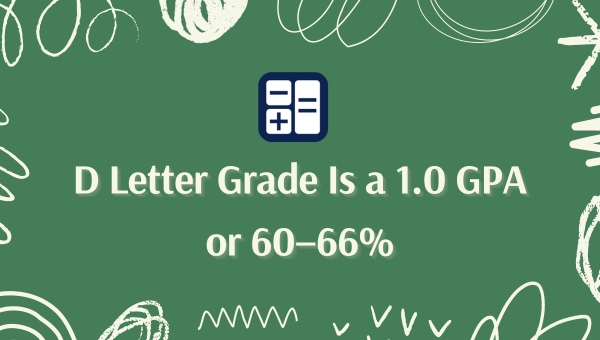B- Letter Grade Is a 2.7 GPA or 80–82%
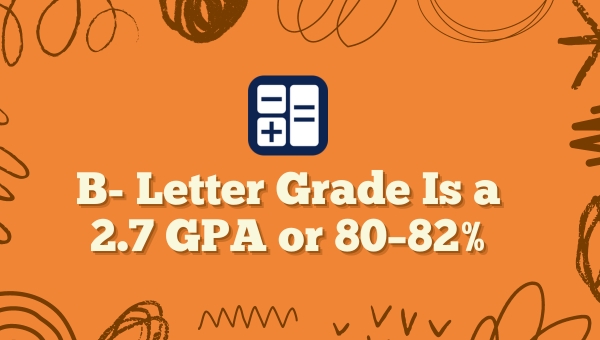
When you receive a B- letter grade, it equates to a 2.7 GPA or an 80-82% average, reflecting a solid yet improvable understanding of your coursework. This grade can significantly impact your academic trajectory, especially if you’re in high school and eyeing college admissions.
You might wonder how this GPA influences your chances with safety, target, and dream schools, or what strategies can help maintain or even boost it. Let’s explore how a B- GPA shapes your future and the actionable steps you can take to elevate your academic performance.
What is a B- GPA?
Understanding a B- GPA is essential if you’re aiming to gauge your academic performance accurately. A B- GPA translates to a 2.7 on the 4.0 grading scale. This means that your average score in your courses falls between 80 and 82 percent. It’s a solid indication that you have a good grasp of the material, although there’s still room for improvement.
GPA stands for Grade Point Average and it’s a numerical representation of your academic achievements. Each letter grade you earn in your courses has a corresponding value on the GPA scale. For a B-, this value is 2.7. So, if you have multiple B- grades, they’ll collectively contribute to your overall GPA, impacting your academic standing.
To calculate your GPA, you multiply the grade value by the number of credit hours for each course, add those together, and then divide by the total number of credit hours.
Having a B- GPA suggests that while you’re doing well, there might be areas where you could benefit from additional study or practice. Understanding this helps you set realistic goals and take actionable steps to improve or maintain your GPA.
What does a B- GPA mean for high school students?
A B- GPA means you might need to carefully consider your college options. You should identify some safety schools where your GPA meets or exceeds the average. At the same time, look for target schools that match your academic profile and dream schools where you can aim high.
Safety Schools
Navigating the college admissions process with a B- GPA means you’ll want to consider safety schools as part of your application strategy. Safety schools are colleges where your academic credentials, including your 2.7 GPA, exceed the institution’s average admission requirements. These schools ensure you have solid options in case admission to more competitive schools doesn’t pan out.
When choosing safety schools, focus on the following:
- Admission Rates: Look for schools with higher acceptance rates. A higher acceptance rate increases your chances of admission.
- Academic Programs: Ensure the school offers strong programs in your areas of interest. Don’t compromise on education quality.
- Campus Environment: Consider the location, size, and culture of the campus. You’ll want a place where you can thrive academically and socially.
Safety schools can be a valuable part of your college application strategy. They provide a sense of security, knowing you have options. By selecting schools where your GPA aligns well with their requirements, you’re setting yourself up for success.
Target Schools
For high school students with a B- GPA, target schools represent institutions where your academic profile is a solid match with the average student admitted.
These schools are within your reach, and your GPA aligns well with their admission standards. Aiming for target schools ensures you have a good chance of acceptance while still being challenged academically.
When identifying target schools, consider these factors:
- Admission Statistics: Look at the average GPA and test scores of admitted students. If your GPA is around 2.7 (80-82%), seek schools where the average GPA of admitted students falls within this range.
- Course Rigor: Evaluate the courses offered. Ensure the school provides a curriculum that will both challenge you and support your academic growth.
- Additional Opportunities: Investigate extracurricular activities, internships, and other opportunities. These can enhance your college experience and help you stand out.
Dream Schools
Many high school students with a B- GPA dream of attending prestigious universities or colleges. While a 2.7 GPA or 80–82% might feel like a barrier, it doesn’t mean your dream schools are out of reach.
However, you need a strategic approach to enhance your application and make yourself stand out.
First, focus on improving your GPA. Even small improvements can make a difference in the eyes of admissions officers.
Second, excel in other areas like standardized tests, extracurricular activities, and leadership roles. Demonstrating a well-rounded profile can offset a lower GPA.
Third, write compelling essays that highlight your personal growth, resilience, and unique experiences. These essays can be powerful tools to showcase your character and determination.
Here’s a quick strategy to boost your chances:
- Improve Academic Performance: Attend tutoring sessions, join study groups, and seek extra help from teachers.
- Enhance Extracurricular Involvement: Participate in clubs, sports, or volunteer activities that align with your interests and showcase your skills.
- Craft Strong Application Essays: Focus on personal stories that highlight your strengths, challenges overcome, and future aspirations.
With dedication and effort, your dream schools can still be within reach.
Proven Tips to Get a B- GPA
If you’re aiming for a B- GPA, start by mastering time management and effective study techniques.
Participate actively in class, take advantage of office hours, and prioritize your assignments wisely.
These strategies can collectively boost your performance and help you achieve your goal.
Time Management Strategies
Ever wondered how some students manage to juggle multiple responsibilities and still maintain a B- GPA? It all boils down to effective time management.
Start by creating a weekly schedule. Allocate specific blocks of time for classes, studying, extracurricular activities, and relaxation. Stick to this schedule religiously to avoid last-minute cramming.
Prioritize your tasks by using a to-do list. Rank them by importance and urgency, focusing on high-priority tasks first. Don’t let less important activities consume your valuable study time.
Utilize tools like planners, calendar apps, or even sticky notes to keep track of deadlines and commitments.
Break larger tasks into smaller, manageable chunks. This makes them less overwhelming and easier to tackle. For example, if you have a research paper due, break it down into research, drafting, and editing phases.
Avoid multitasking. It might seem efficient, but it often leads to mistakes and wasted time. Instead, focus on one task at a time, giving it your full attention.
Effective Study Techniques
To achieve a B- GPA, focus on honing effective study techniques that maximize your productivity without overwhelming you. First, create a dedicated study schedule. Consistency is key, so set aside specific times each day for studying and stick to it. This routine helps reinforce your commitment to your goals.
Next, use active learning methods. Don’t just passively read your textbooks; engage with the material by summarizing key points, asking questions, and teaching concepts to someone else. Utilizing flashcards and practice tests can also reinforce your understanding and retention of information.
Break your study sessions into manageable chunks. The Pomodoro Technique, which involves 25 minutes of focused study followed by a 5-minute break, can keep you motivated and reduce burnout. Over time, you’ll notice improved concentration and efficiency.
Additionally, find a study environment that minimizes distractions. Whether it’s a quiet library or a cozy corner at home, your surroundings can greatly influence your focus and productivity.
Class Participation Benefits
Building on effective study techniques, another key factor in achieving a B- GPA is active class participation. When you engage in class discussions, ask questions, and contribute to group activities, you’re not just passively absorbing information; you’re actively processing it. This engagement helps solidify your understanding of the material, making it easier to recall during exams.
By participating, you also demonstrate to your instructor that you’re invested in the course. This can sometimes translate to more leniency in grading borderline cases, as teachers often appreciate and reward effort and enthusiasm.
Moreover, engaging in class can clarify any doubts you might’ve about the subject matter, allowing you to grasp complex concepts more effectively.
You’ll also benefit from hearing diverse perspectives from your classmates. This can deepen your understanding and provide new insights that you mightn’t have considered.
Additionally, active participation can improve your communication skills, which are valuable not only in academia but also in your future career.
Incorporating class participation into your routine doesn’t require extensive effort. Simply being attentive, taking notes, and voicing your thoughts when appropriate can make a significant difference in your academic performance and help you maintain that B- GPA.
Utilizing Office Hours
Taking advantage of office hours can be a game-changer in maintaining a B- GPA. When you visit your professors during these times, you’re not just showing initiative; you’re opening doors to personalized guidance.
Professors appreciate students who seek help, and they’re often more willing to clarify confusing concepts, offer study tips, and provide insights into upcoming exams.
Prepare specific questions or topics you’re struggling with before you go. This shows you’ve made an effort to understand the material on your own. If you’re unsure where to start, ask for feedback on recent assignments or exams. Understanding where you went wrong and how to improve can elevate your performance in future tasks.
Additionally, building a rapport with your professors can be beneficial. They might offer extra resources or even slight leniency in grading if they see you’re genuinely trying.
Don’t wait until you’re overwhelmed; regularly attending office hours can keep you on track and prevent small issues from snowballing.
Prioritizing Assignments Effectively
Effectively prioritizing assignments is crucial when aiming to maintain a B- GPA. Start by listing all your assignments with their due dates. Rank them by importance and deadline. Tackling the most urgent tasks first will help you avoid last-minute stress.
Next, break down larger projects into smaller, manageable tasks. By doing this, you’ll find it easier to make steady progress without feeling overwhelmed. Use tools like calendars, planners, or apps to keep track of your schedule. This will give you a clear visual of what needs your immediate attention.
Another tip is to allocate specific time blocks for each subject or assignment. This helps you focus and prevents procrastination. During these blocks, eliminate distractions—turn off notifications, find a quiet spot, and set a timer to keep you on track.
Don’t forget to review your progress regularly. Adjust your priorities if new assignments come in or if you realize you need more time for a particular task.
Also, take breaks to recharge; overworking can reduce the quality of your output.
How to Raise Your GPA Fast?
Boosting your GPA quickly requires a strategic approach and dedication. First, identify the courses where you can make the most impact.
Focus on those classes where a slight improvement can significantly elevate your overall GPA. Speak with your professors to understand exactly what’s expected and seek feedback on your assignments.
Next, create a study schedule that prioritizes high-impact subjects. Allocate more time to challenging courses and less to those you’re already excelling in. Utilize resources like tutoring centers, study groups, and online materials to reinforce your understanding.
Stay organized by using planners or digital apps. Track deadlines, upcoming exams, and important project milestones. Break down large tasks into smaller, manageable chunks to avoid last-minute cramming.
Another important strategy is to actively participate in class. Engage in discussions, ask questions, and show your commitment. This not only helps you grasp the material better but can also positively influence your participation grade.
Conclusion
Achieving a B- GPA means you’ve got a solid grasp of your coursework, but there’s room to grow. Use these tips to maintain or boost your GPA, ensuring you’re prepared for your college applications. Focus on improving study habits, seeking help when needed, and staying organized.
With dedication and effort, you can elevate your academic performance and expand your college options. Don’t settle—aim higher and watch your opportunities multiply.
